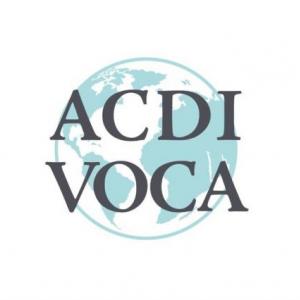The “Domino Effect” of Disbursing a Single Microloan
Image

Society Development Committee, or SDC, based in Faridpur, Bangladesh, is a microfinance partner of the Feed the Future Bangladesh Livestock and Nutrition Activity, funded by USAID and implemented by ACDI/VOCA. Through this partnership, thousands of people working in Bangladesh’s livestock sector have benefited from microfinance products. This case study explores the profound impact microloans have on rural communities in Bangladesh, especially among women engaged in small-scale entrepreneurship within the livestock sector.
One small loan to an individual from lower socio-economic communities could change a whole family’s quality of life and open them up to a greater future. Women in Bangladesh who receive microloans start not only start earning more income and affording a higher standard of living, but also have been observed to invest more in household needs, such as education, better security, and improved nutrition for their children.
Sabina Yasmin, a mother of three, is the perfect example of how a microfinance product designed for the livestock sector allowed her to move away from exploitative usury toward a pathway to safe entrepreneurship and greater income.
The Trouble with Predatory Lending
Previously, many women like Sabina would attempt to expand their farms through informal money lenders, known as mohajons in Bangladesh. Usually, the lender takes jewelry or other valuables as collateral. There is no form of guarantee and a high interest rate, too. This is a system with no security afforded to borrowers in any official capacity, and, if a borrower were to feel their family’s safety was threatened by loan sharks, they would not be reassured by going to the local police. Repayment is burdensome to the borrower, rendering the “expansion” loan redundant.
Livestock Microfinance Institution Products by SDC
Generally, commercial banks cannot support smallholder farmers because the loan size is often too small to be profitable relative to the administrative work needed to approve it. From the farmer’s perspective, the high interest rates, coupled with dealing with a formal bank, may not be a desirable option. Some social behavior change may also be needed before it is normalized.
Microfinance institutions (MFIs), like SDC, have an asset in the form of their expansive field staff, who act as a points of contact for farmers to access microloans. However, MFIs need to have livestock-specific loan products that will cater to the earnings cycle of those who raise livestock. If the repayment period does not match the time when they will be earning income from their livestock, the farmers’ financial situation will be weakened and expanding their farms will be difficult.
SDC offers four livestock MFI products—two existing for dairy and beef fattening and two newly designed for goat and cattle rearing. SDC fast-tracked the processing time for these loans, reducing the time from when a prospective client applies for the loan to when they receive the money from one month to two weeks.
Loan Disbursement and Trainings Under the Partnership
SDC and the Feed the Future Bangladesh Livestock and Nutrition Activity designed loan products tailored to the livestock farmer clientele and set out to conduct a series of training sessions to disseminate information on farm management and livestock rearing practices that would optimize the efficiency and output productivity of the farm.
The partnership held four multi-stakeholder meetings with the private partner partner, SDC, and the district level and upazila level offices of the Department of Livestock Services to structure the flow of influence and impact to as many farmers as possible in a focused manner.
SDC hired 45 new staff members to mobilize 30 branch offices and implement 250 promotional events, reaching over 15,000 farmers and establishing several farmer groups. The partnership also conducted training on farm management practices through “courtyard sessions,” where the open yard of a livestock farmer’s house is used to host an information session attended by people in the neighborhood. These sessions reached over 8,000 farmers. The partnership also rolled out 160 animal heath camps, treating the livestock of 6,312 farmers.
Better Access to Loans and Training
Sabina Yasmin and other livestock farmers now have bigger farms, higher incomes, and financial safety from mohajons. Previously, Sabina Yasmin was always behind on her loan repayment, and this caused her to be unable to provide proper animal healthcare, quality feed, and other animal welfare services. The unavailability of trainings compounded this, leaving her farm operating far below optimum productivity.
When Sabina discovered the availability of this loan product from SDC, she quit all transactions with the mohajon and started joining training sessions held by the Activity. This capacity building allowed Sabina to capitalize on her farm, and the microloan made real expansion possible. It allowed her to provide proper animal healthcare, purchase high-quality feed, and receive other animal welfare services. After the intervention, Sabina applied a loan of BDT 300,000 to buy two milking cows that produced an impressive 25 liters a day. She continued to add to her portfolio and credit record, with her most recent loan totaling BDT 600,000. She now boasts a farm of seven milking cows and two bulls.
The “Domino Effect” on Nutrition and Standards of Living
The partnership ultimately disbursed BDT 740,009,000 (USD 6,727,355) to 8,351 livestock entrepreneurs to help them expand their farms and income streams. Through the disbursement of these loans, livestock farmers throughout the Feed the Future Zones in Bangladesh are safely multiplying their cattle and growing their farms. They are also making bigger contributions to the production and consumption of meat and milk products in Bangladesh and opening pathways to higher income and standards of living, including better nutrition and food security for the farmers themselves.


